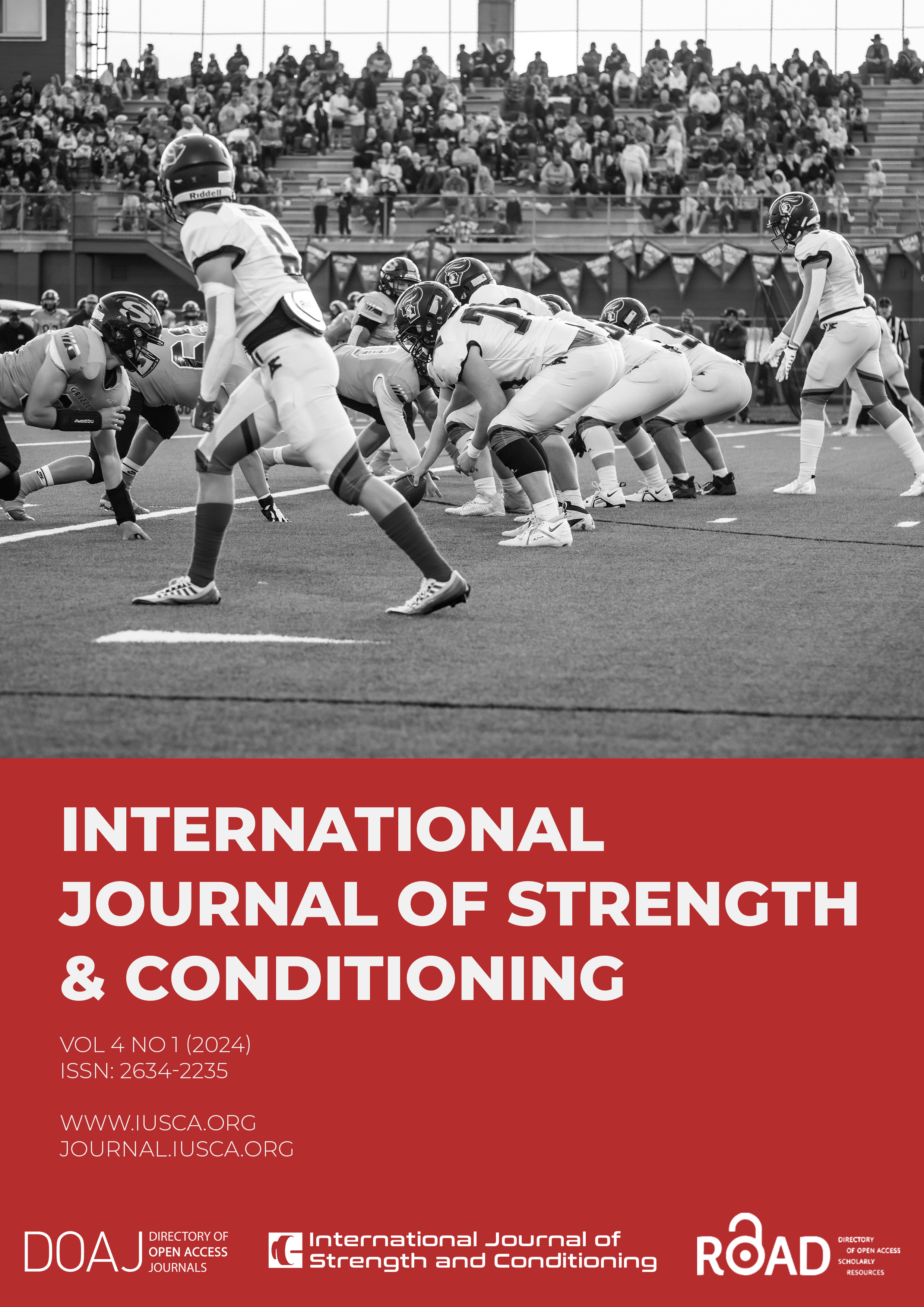Weighted Vest Load Arrangement and Data Normalization Effects on Lower Limb Biomechanics During Countermovement Jump Landings
DOI:
https://doi.org/10.47206/ijsc.v4i1.186Keywords:
Weighted vest load, Lower limb kinematics and kinetics, Countermovement jump landingsAbstract
This paper assessed the weighted vest load arrangement and data normalization method effects on ground reaction forces (GRF), joint kinematics, and joint kinetics during the landing portion of the countermovement jump. Vertical GRF and sagittal kinematic data were obtained from 12 males and 12 females during countermovement jump-landings in 4 different loading arrangements (unloaded, 10% body mass load placed anteriorly, posteriorly, and split anterior/posterior). Two methods (body mass vs. mass*landing height) were used to normalize joint torques to determine whether common mass-normalization (type A) yielded different results than a jump-landing specific mass*landing height normalization (type B) in statistical significance. Mixed-model analyses of variance (α=0.05) and effect sizes (ES) were used to assess differences between sexes and loading conditions for each normalization method. Results show that for normalization A, significant statistical differences were found between sexes for peak vertical GRF, hip moment, and knee moment. Pooled sex peak vertical GRF and hip moments showed significant differences when comparing the unloaded with the back and front-loaded conditions. For normalization B, the peak vertical GRF also showed significant differences between men and women but with smaller effect sizes. Only the hip moment showed significant differences for both normalization methods but changed the magnitude of its effect sizes. Results suggest that different normalization methods could be considered for joint moments or GRF depending on the nature of the statistical significance of jump height.
Metrics
Downloads
Published
Issue
Section
License
Copyright (c) 2024 Juan Baus, John R. Harry, James Yang

This work is licensed under a Creative Commons Attribution 4.0 International License.
Authors retain copyright of their work, granting IJSC a license to publish and distribute. All articles are distributed under the Creative Commons Attribution 4.0 License. We clearly state any fees associated with submissions or access for readers. For copyright or licensing queries, stakeholders can reach out to journal@iusca.org.



